|
Wisley's Alpine Log
By Paul Cumbleton
Log 10 6 Dec 2007
While indulging myself on Massonia & Daubenya in the last two logs, winter arrived (and then went again) with some low night temperatures between -6 and -9 Centigrade (21 to 16 Fahrenheit). There were some wonderful frost sculptures on all the plants in the rock garden
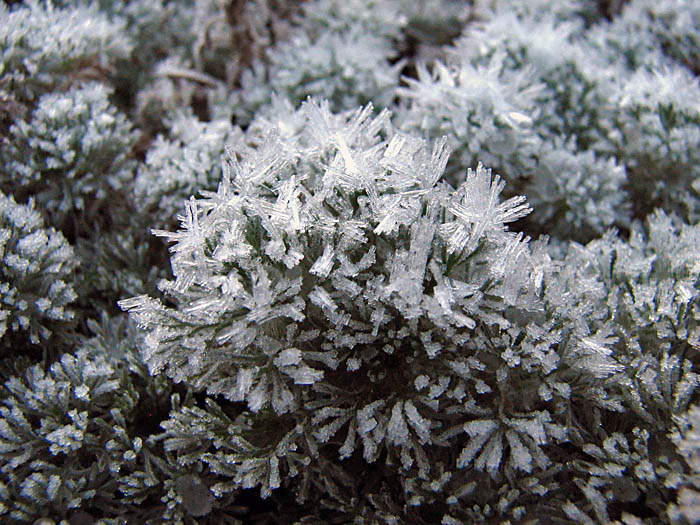
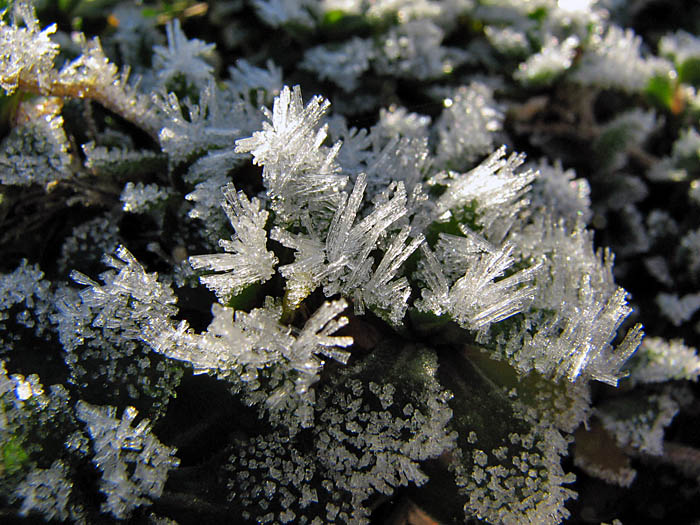
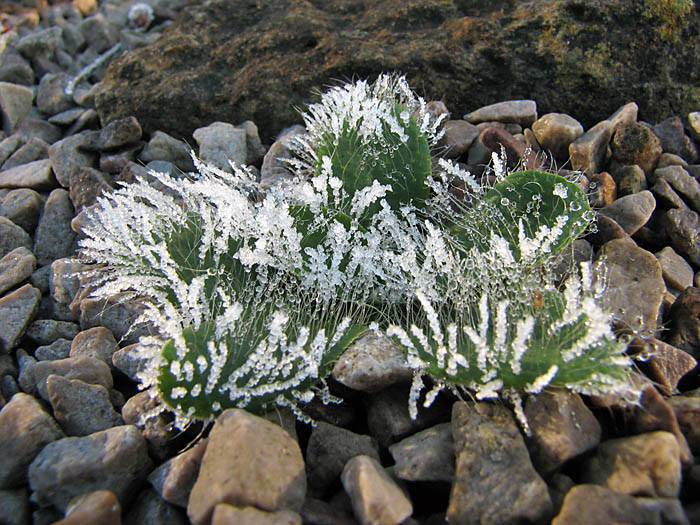
Fortunately preparations for frost were all in place. One such activity which attracts interest from our visitors is when we give our Gunnera their winter wigwams. This is our way of giving them some frost protection using just their own leaves and stems - a very "green" approach, recycling the material already there. First we cut down all the old leaves and stems and cut the leaves off from the stem tops.
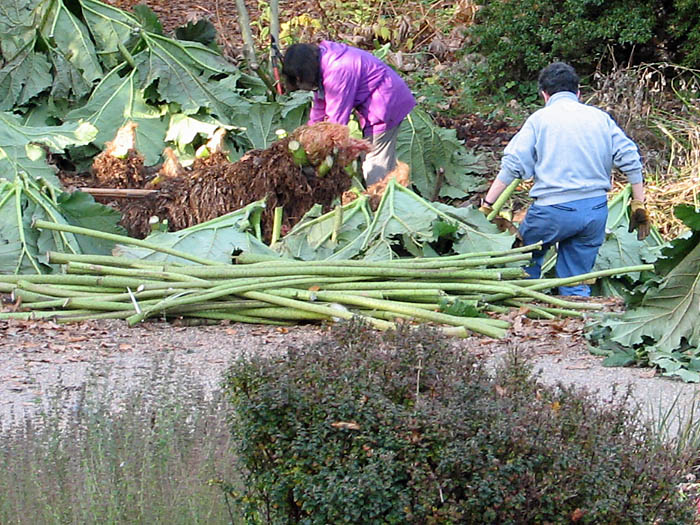
Gunnera stems after cutting
We then push the stems into the ground around the crowns to provide supports.
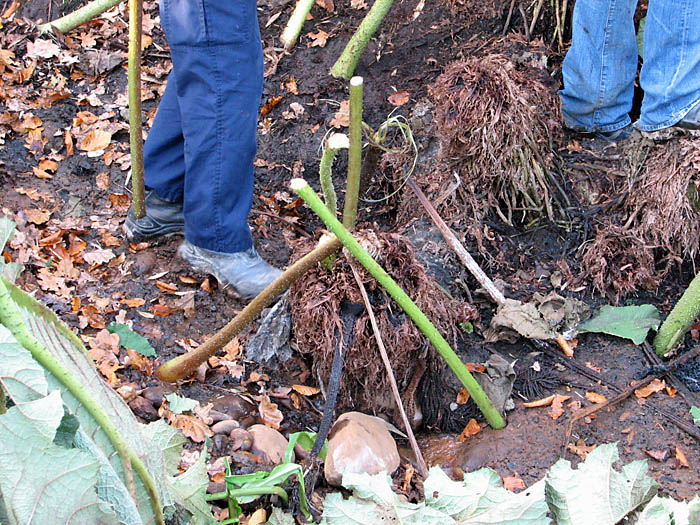
Stems pushed in around the crowns
Finally we push the old leaves, upside down onto the stem supports to cover the crowns. We push several leaves onto each crown. The result is a wigwam of leaves over each crown which provides adequate shelter for the winter.
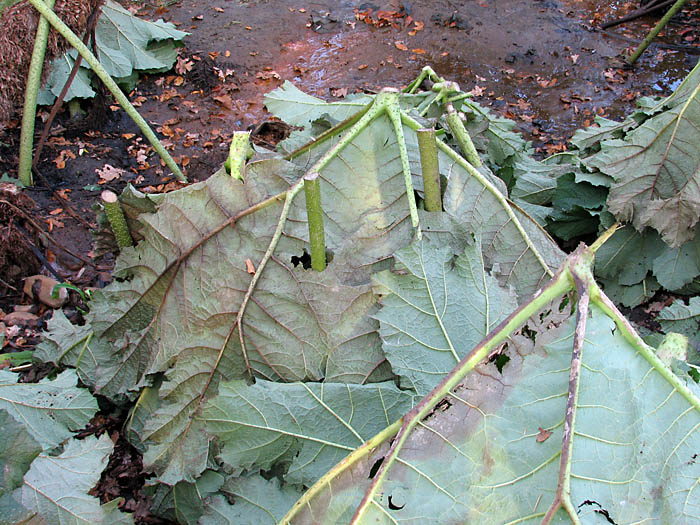 Wigwams on the Gunnera Wigwams on the Gunnera
Over winter the whole lot slowly decays, leaving little to clear away again in Spring. While doing the cutting down we came across some dark blue-green coloured areas in the stems. We were not sure what these were so we sent them to our pathologists.
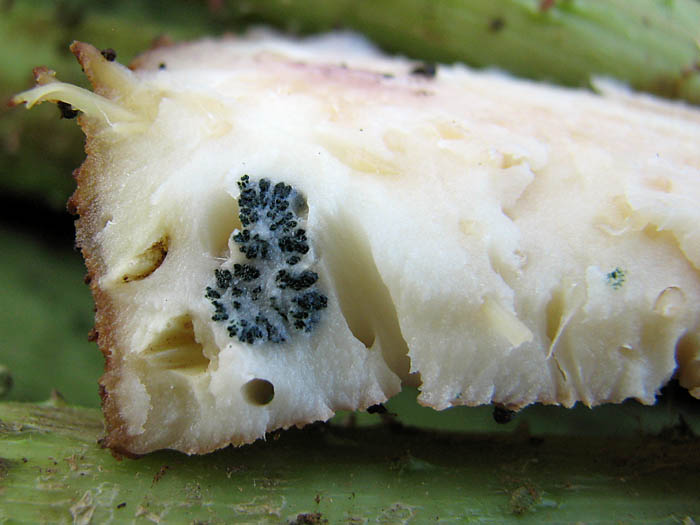
Blue areas in Gunnera stems
It turned out these were colonies of a kind of bacteria called Nostoc. These are what are called cyanobacteria and they live in a symbiotic relationship with the Gunnera. They fix nitrogen which the Gunnera can use, enabling it to grow in otherwise nitrate-poor soils. So this bacterial infection turned out to be a beneficial one for a change.
Back in the yard, we have a small house behind the scenes which houses the Pleione, Ponerorchis and a very few pots of Cypripedium.
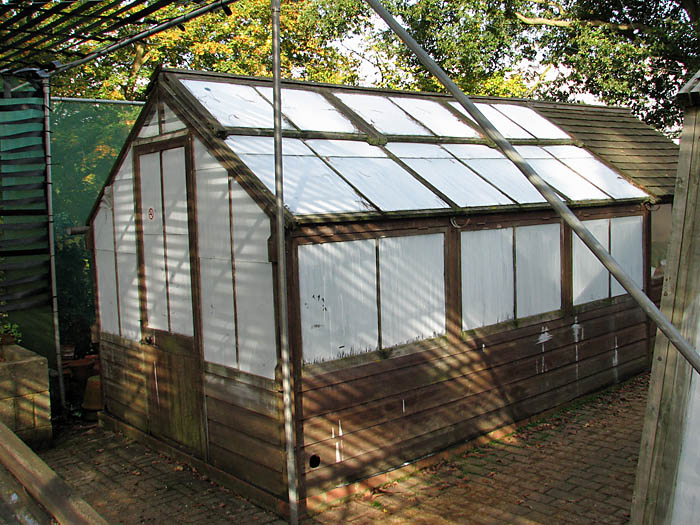
Small Orchid House
We intend to take down this house and in its place re-erect the old Display House that was taken down to make way for the new Alitex Display House. This will give us a lot more space for orchids while recycling and making use of the old house. The little orchid house will also be re-used by someone from another department at Wisley, so maintaining the recycling theme. Work has started on this project. To make way for the new house we also needed to demolish a cold frame so this was the first task
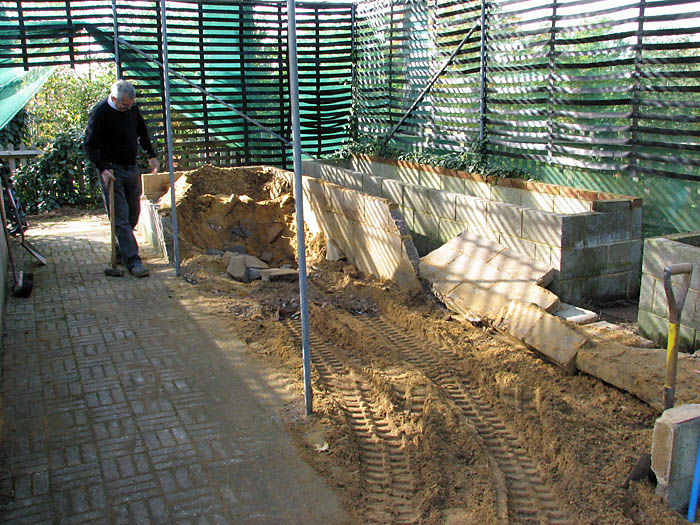
Demolishing old cold frame
Then came the dismantling of the old glasshouse.
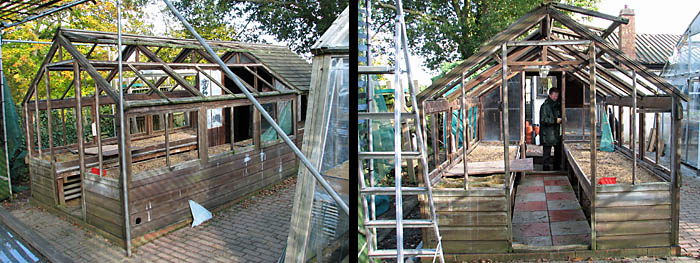
Dismantling old glasshouse
The site was then cleared and roughly levelled
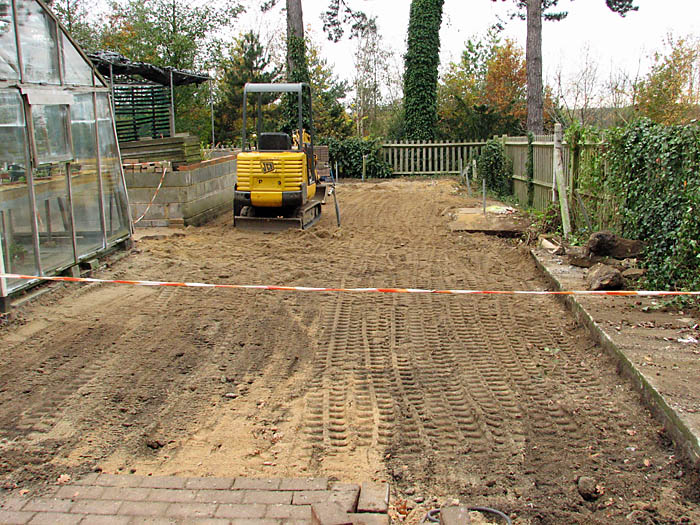
Clearing site
In doing this we uncovered a drain cover that we didn't know existed
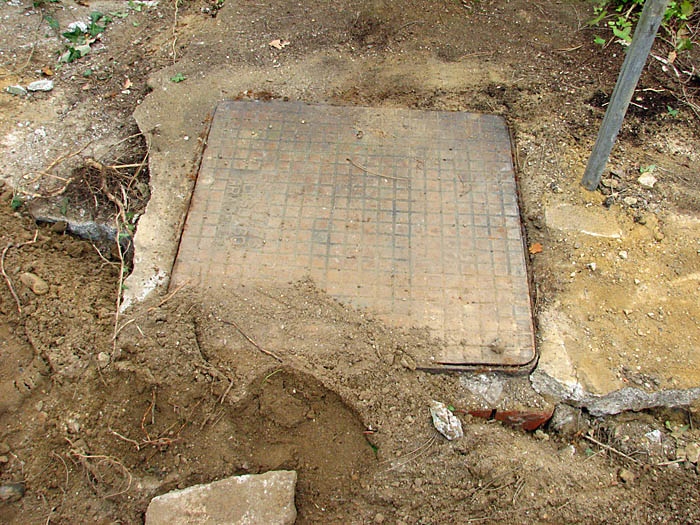
Drain cover
On investigation this proved to be a very deep hole with a drain at the bottom. We cannot remove this or build on top of it yet it is in the way. What we decided in the end is that we will shorten a little the glasshouse that is going to be re-erected, thus avoiding the drain. The way the house is constructed means we should be able to do this with little problem.
Back to plants to finish with and some things flowering or looking good right now:
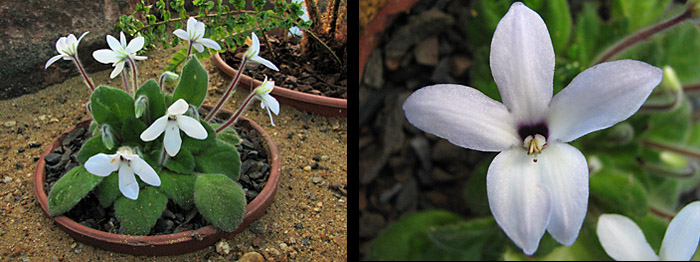
Petrocosmea grandiflora
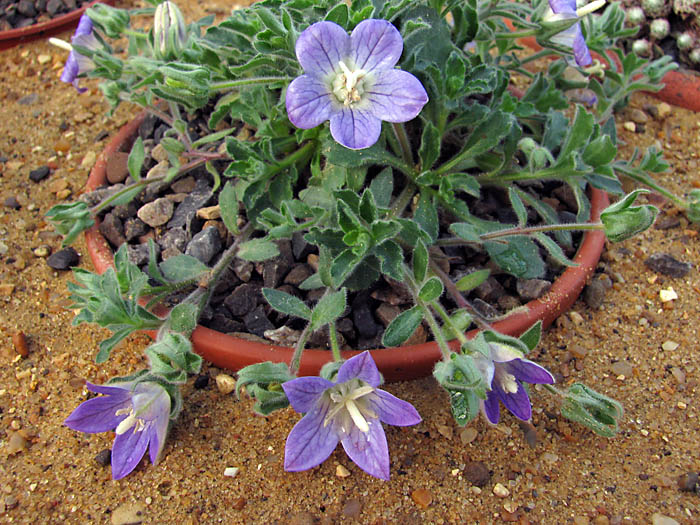
Campanula mollis
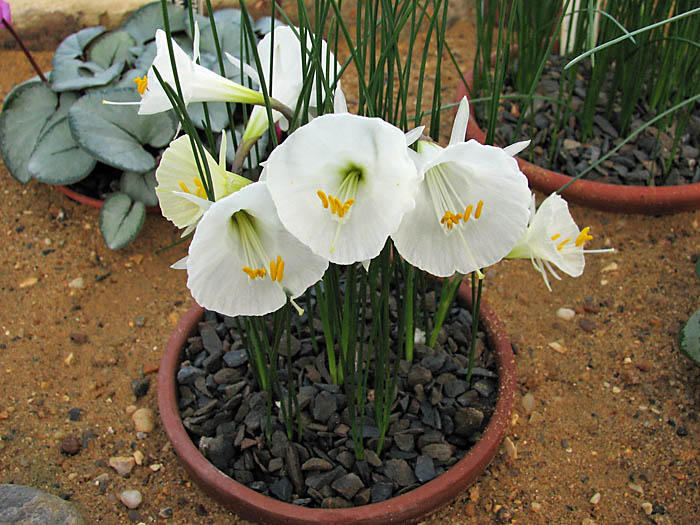
Narcissus 'Taffeta'
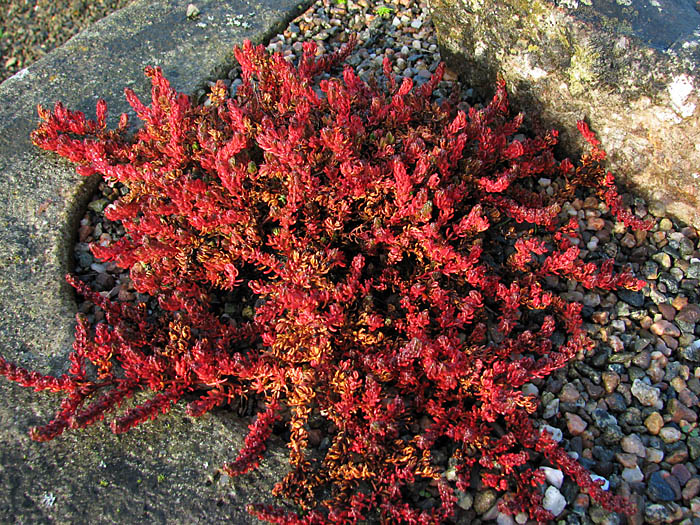
Frankenia thymifolia
The Frankenia (common name "Sea Heath") is in the corner of a trough and looks fantastic when shafts of sunshine light it up on otherwise dull winter days. This species comes from southern Spain/north Africa and is halophytic which means it can tolerate salty conditions.
^ back to the top ^
|

